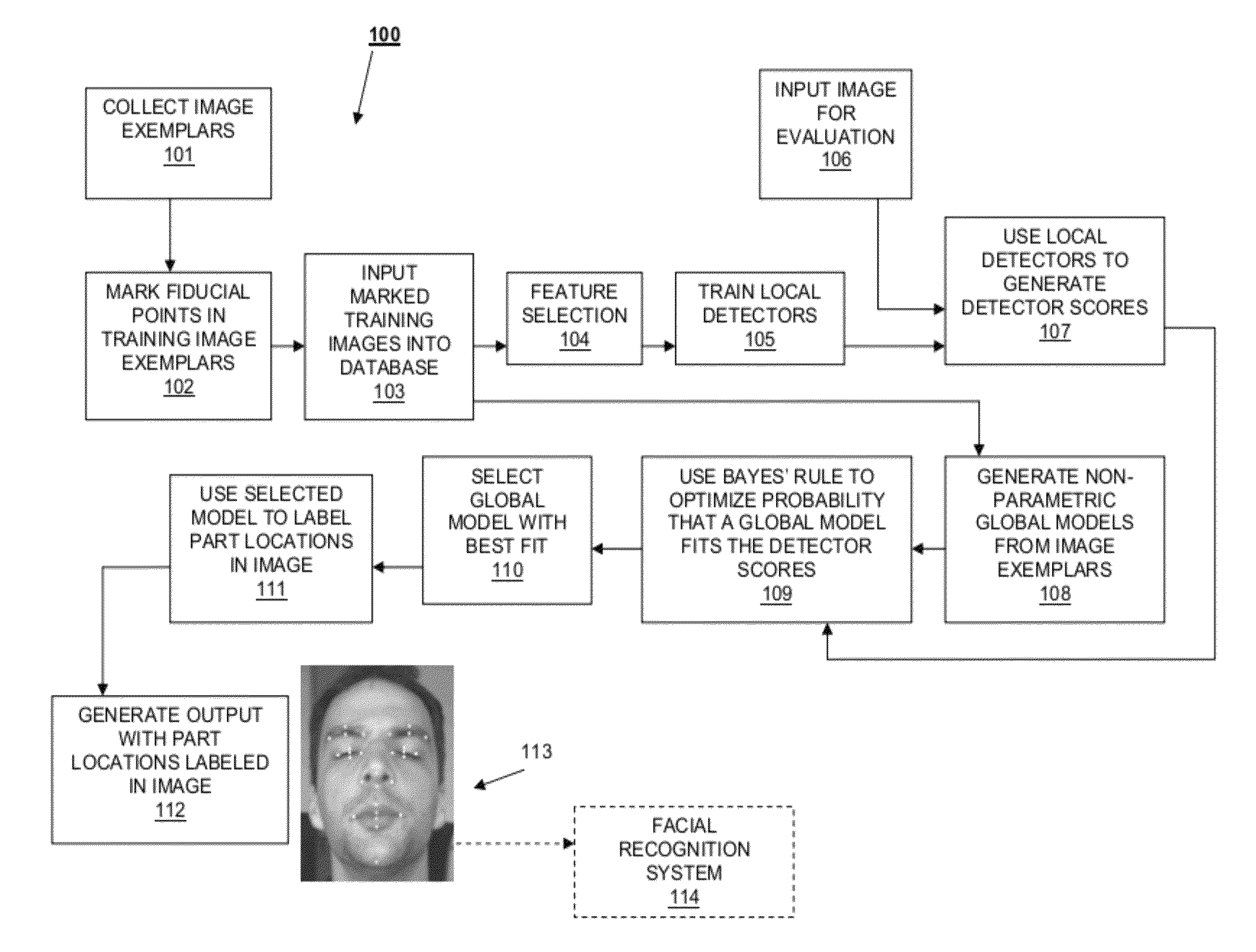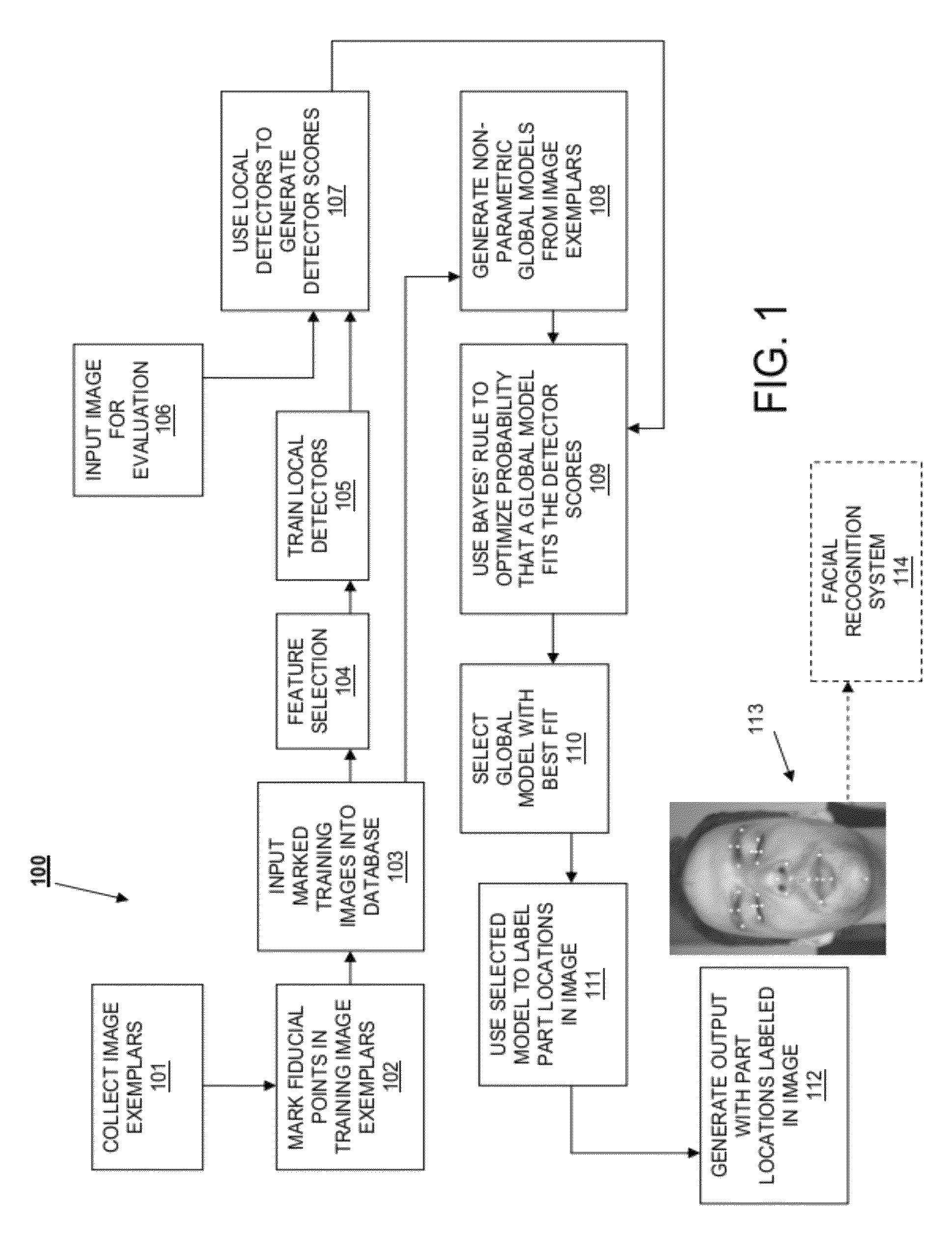Method and system for localizing parts of an object in an image for computer vision applications
a computer vision and image technology, applied in the field of computer-aided analysis of images, can solve the problems of false detection, large image support, and difficulty in face detection from a single image,
- Summary
- Abstract
- Description
- Claims
- Application Information
AI Technical Summary
Benefits of technology
Problems solved by technology
Method used
Image
Examples
examples
[0091]The present invention focuses on localizing parts in natural face images, taken under a wide range of poses, lighting conditions, and facial expressions, in the presence of occluding objects such as sunglasses or microphones. Existing datasets for evaluating part localization do not contain the range of conditions.
[0092]Since researchers have recently reported results on BioID, the results produced by the present invention are compared to prior results on BioID. Like most datasets used to evaluate part localization on face images, BioID contains near-frontal views and less variation in viewing conditions than LFPW.
[0093]LFPW consists of 3,000 faces from images downloaded from the web using simple text queries on sites such as google.com, flickr.com, and yahoo.com. The 3,000 faces were detected using a commercial, off-the-shelf (COTS) face detection system. Faces were excluded only if they were incorrectly detected by the COTS detector or if they contained text on the face. Not...
PUM
 Login to View More
Login to View More Abstract
Description
Claims
Application Information
 Login to View More
Login to View More - R&D
- Intellectual Property
- Life Sciences
- Materials
- Tech Scout
- Unparalleled Data Quality
- Higher Quality Content
- 60% Fewer Hallucinations
Browse by: Latest US Patents, China's latest patents, Technical Efficacy Thesaurus, Application Domain, Technology Topic, Popular Technical Reports.
© 2025 PatSnap. All rights reserved.Legal|Privacy policy|Modern Slavery Act Transparency Statement|Sitemap|About US| Contact US: help@patsnap.com



